Football
All the Stats in the World Mean Nothing if You Don’t Win Games
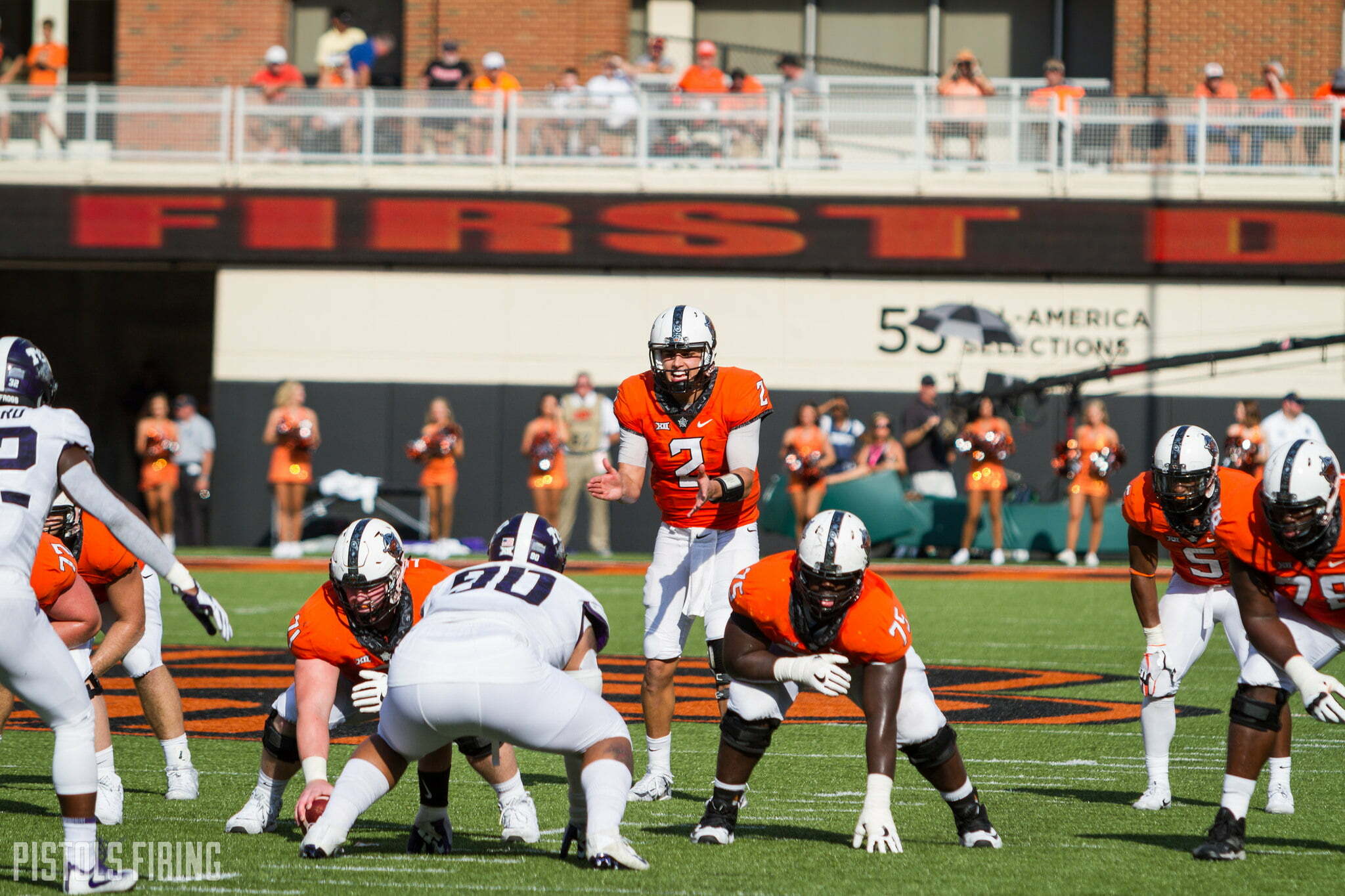
“Stats are for losers.” Made famous by the peerless Todd Monken and a hypothetical t-shirt that should have been made by me about three years ago (we have a store, by the way, you should check it out).
Anyway, here is a reality: Your football team can average 1,000 points and 10,000 yards per game and still go 6-6 on the season and spend Christmas in Memphis instead of New Year’s in Pasadena. It’s not likely, but it’s possible.
We (I) have been pushing season-long stats in front of you for the past few weeks to show you that 1. Mike Yurcich is a good offensive coordinator (he is, sorry) 2. That Oklahoma State is playing at a higher level offensively in 2017 than at the same point in 2011 (they are) and 3. That the run defense so far has been pretty great (for OSU).
However … none of these stats on the whole mean a whole lot if they’re not applied equally throughout all of your games. That is, you could have the No. 1 offense in the country averaging 1,200 yards per game, but if you notched 2,300 yards in one game and just 100 yards in the next and are 1-1 on the season, that doesn’t mean you’re a good team. You need good stats to be good. You need a low per-game variance to be great.
This is what Monken was saying six years ago, and Mike Gundy added to it four categories on Monday that can sway seasons when he was asked about how parity will affect the Big 12 title race this year.
“The four things that can sway a game in this league would be turnovers, special teams play, injuries and quarterback play right now with the teams that are in this conference,” said Gundy. Let’s take a look at each one as it relates to Big 12 play (where OSU has been fairly lackluster with an uninspiring win and a terrible loss).
Turnovers: Oklahoma State has a -3 margin in Big 12 play thus far. That’s second-worst in the league to Kansas.
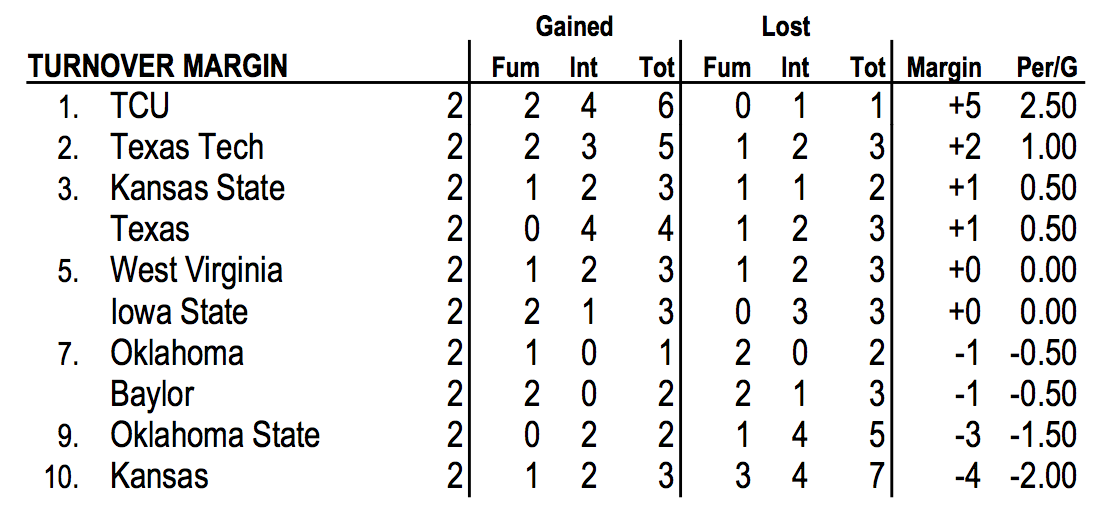
As we know, that -1.5 wasn’t distributed equally. It was 0 against Tech and -3 against TCU, and Oklahoma State is 1-9 under Gundy when losing the turnover battle in a game by 3 or more.
This is what I’m talking about when I say that OSU’s overall stats can look great (and do in most cases), but one of these four things can disrupt your actual record in a big way if it is way out of whack in an individual game.
OSU can skate by if it loses each game’s turnover battle by 0.2 turnovers (this is what it is averaging overall on the season) or even 1.5 turnovers (its Big 12 average), but it can’t win games when one of those battles is lost by 3 (like what happened against TCU).
Special teams play: One of the dirty little secrets of this team thus far is that it has not been good in the field position game. In fact, OSU is currently second-worst in kick coverage in Big 12 games and No. 111 in the nation in average starting field position overall for the season. That’s not good!
Against TCU it was even worse. OSU’s average starting field position was its own 26 (over a yard worse than its season average). TCU’s was its own 33 which is six yards worse than OSU normally gives up. That doesn’t sound like a big deal, but it is. And especially so when Oklahoma State has ranked in the top 20 in net field position in each of the last two years.
Injuries: Two starting linemen and a receiver down against TCU.
Quarterback play: Two picks and a fumble against TCU.
So as you can see, Oklahoma State was basically 0/4 in these categories against TCU. It doesn’t affect their overall statistics for the year, but they all served as reasons why Oklahoma State lost. And in each of these categories OSU was standard deviations worse against TCU than it has been on the year. This is important to remember for two reasons.
1. For those of us touting Oklahoma State as an elite team by using season-long stats (raises hand) — That doesn’t mean it has been great in every individual game.
2. For those of us saying after the TCU game that OSU was cooked — These categories are (mostly) correctable (or they should be). The difficult part is assembling the car (which OSU has done magnificently this year). Fixing the small, broken pieces as you chug through the year is tough, yes, but at least you know if you make them whole again the entire machine is still going to work and work quite wonderfully.
The end of the 2015 season was discouraging because it was clear Oklahoma State’s machine was inferior to several other machines in the conference and on the national landscape. They had to do all the little things right to get to 10-0 that season. That doesn’t appear to be true this year which means there’s more margin for error. It also means that when OSU loses games, it’s far more frustrating because it’s the little stuff that will ultimately sully the bigger picture.

-
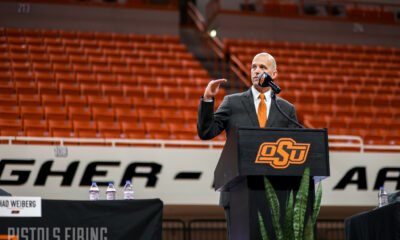
 Hoops5 days ago
Hoops5 days agoTwo Transfer Portal Prospects Put Oklahoma State in Top Group
-
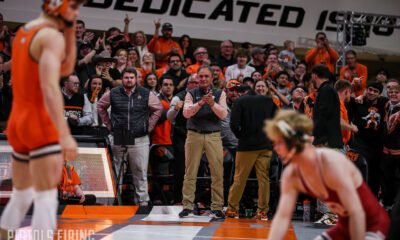
 Wrestling4 days ago
Wrestling4 days agoOSU Wrestling: John Smith Announces Retirement
-
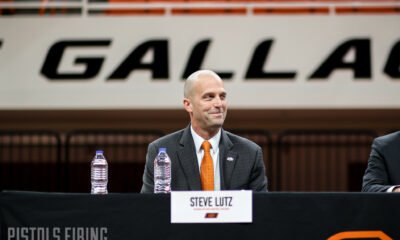
 Hoops5 days ago
Hoops5 days agoFormer Western Kentucky Assistant Robert Guster Follows Lutz to Stillwater
-
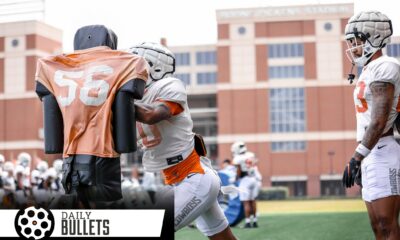
 Daily Bullets5 days ago
Daily Bullets5 days agoDaily Bullets (Apr. 11): Pokes Land a Couple of Commits, Add Another Coach (Sort Of)






